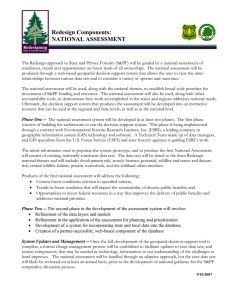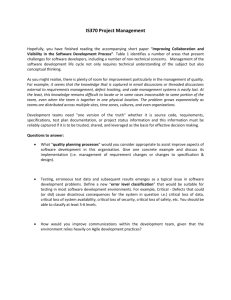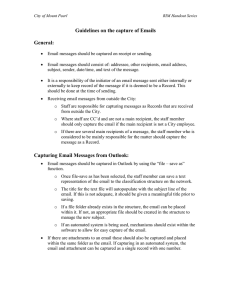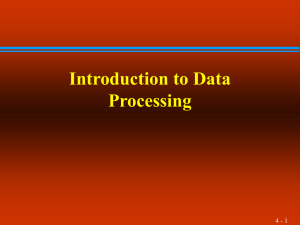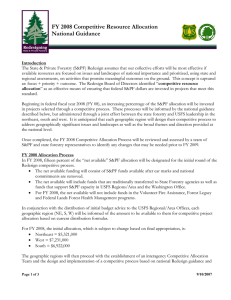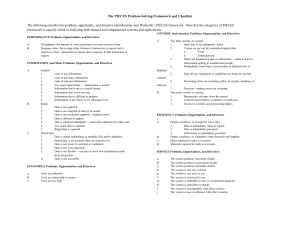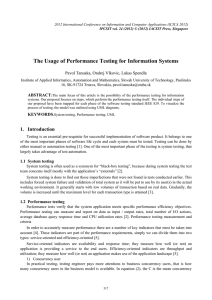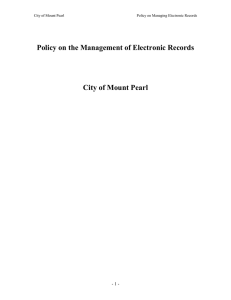Performance Measure Principles
advertisement
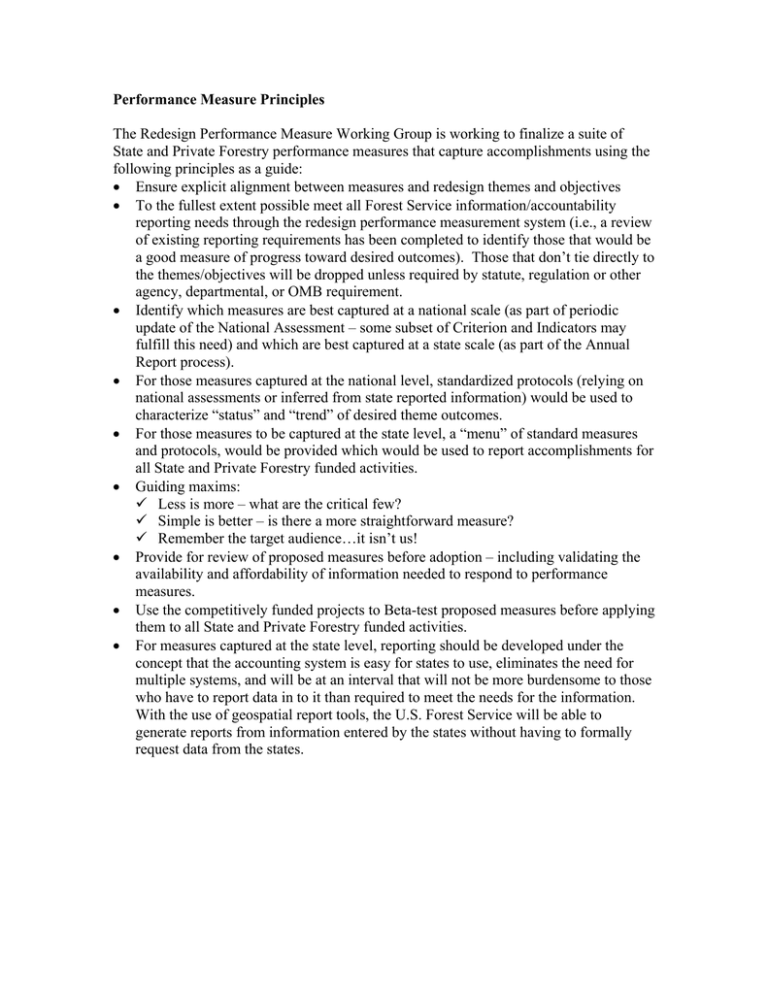
Performance Measure Principles The Redesign Performance Measure Working Group is working to finalize a suite of State and Private Forestry performance measures that capture accomplishments using the following principles as a guide: • Ensure explicit alignment between measures and redesign themes and objectives • To the fullest extent possible meet all Forest Service information/accountability reporting needs through the redesign performance measurement system (i.e., a review of existing reporting requirements has been completed to identify those that would be a good measure of progress toward desired outcomes). Those that don’t tie directly to the themes/objectives will be dropped unless required by statute, regulation or other agency, departmental, or OMB requirement. • Identify which measures are best captured at a national scale (as part of periodic update of the National Assessment – some subset of Criterion and Indicators may fulfill this need) and which are best captured at a state scale (as part of the Annual Report process). • For those measures captured at the national level, standardized protocols (relying on national assessments or inferred from state reported information) would be used to characterize “status” and “trend” of desired theme outcomes. • For those measures to be captured at the state level, a “menu” of standard measures and protocols, would be provided which would be used to report accomplishments for all State and Private Forestry funded activities. • Guiding maxims: 9 Less is more – what are the critical few? 9 Simple is better – is there a more straightforward measure? 9 Remember the target audience…it isn’t us! • Provide for review of proposed measures before adoption – including validating the availability and affordability of information needed to respond to performance measures. • Use the competitively funded projects to Beta-test proposed measures before applying them to all State and Private Forestry funded activities. • For measures captured at the state level, reporting should be developed under the concept that the accounting system is easy for states to use, eliminates the need for multiple systems, and will be at an interval that will not be more burdensome to those who have to report data in to it than required to meet the needs for the information. With the use of geospatial report tools, the U.S. Forest Service will be able to generate reports from information entered by the states without having to formally request data from the states.
